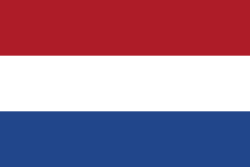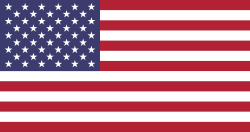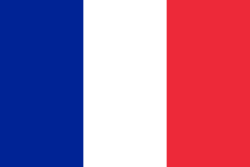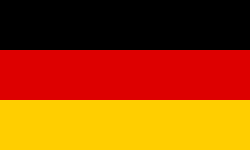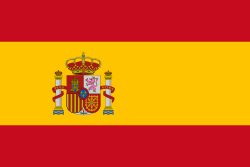De Chinese meubelindustrie kan bogen op een uitgebreid en divers materiaalpalet, waarbij bewerkte platen een aanzienlijk deel vormen. Elk type bewerkte plaat heeft unieke kenmerken en kostenimplicaties, wat het belang van een uitgebreid begrip van deze materialen onderstreept. Deze diepgaande verkenning richt zich uitsluitend op bewerkte platen die gewoonlijk worden gebruikt in de meubelbouw, met uitzondering van massief houtsoorten, die het onderwerp zullen zijn van een afzonderlijke analyse. Bovendien valt blokplaat, voornamelijk gebruikt in de productie van deuren, panelen en scheidingswanden, buiten het bereik van dit artikel. Door ons te verdiepen in de complexiteit van bewerkte platen, streven we ernaar waardevolle inzichten te bieden voor zowel fabrikanten als consumenten die weloverwogen beslissingen willen nemen over de materiaalkeuze in het meubelproductieproces. Deze beslissingen zullen uiteindelijk van invloed zijn op de esthetische aantrekkingskracht, structurele integriteit en algehele waarde van het meubilair.
Soorten houtplaten: kernmaterialen
Vezelplaat en multiplex zijn twee fundamentele categorieën van bewerkte houtplaten, elk met verschillende eigenschappen en toepassingen. Vezelplaat wordt gemaakt door houtvezels samen te persen tot een plaat, wat resulteert in een materiaal dat vaak dichter en gladder is dan multiplex. De uniforme structuur maakt het ideaal voor toepassingen die een vlak oppervlak vereisen, zoals kasten en meubelpanelen. Multiplex daarentegen wordt gemaakt door dunne platen houtfineer in dwarsrichting te leggen, wat zorgt voor superieure sterkte en stabiliteit. Dit maakt multiplex zeer geschikt voor structurele toepassingen zoals dakbedekking, vloeren en wandbekleding. Zowel vezelplaat als multiplex bieden voordelen ten opzichte van massief hout, waaronder kosteneffectiviteit, dimensionale stabiliteit en consistente vakmanschap.

LDF/ Spaanplaat
Low-density fiberboard (LDF) , vaak spaanplaat genoemd, is een type vezelplaat dat is gemaakt van houtdeeltjes of -chips die met een bindmiddel aan elkaar zijn gebonden. Het is de lichtste, zwakste en meest betaalbare plaat binnen de categorie vezelplaten. Spaanplaat wordt vaak gebruikt voor niet-zichtbare onderdelen van meubels die de structurele stabiliteit niet significant beïnvloeden. Vanwege de lagere dichtheid in vergelijking met andere vezelplaten, is LDF gevoeliger voor vervorming en uitzetting bij blootstelling aan vocht.
MDF
Medium-density fiberboardbestaat uit houtvezels en een hars-wasbindmiddel, samengeperst onder druk en hitte om een stevig bord te vormen. Het heeft een hogere dichtheid dan LDF en is een populaire keuze geworden voor meubels vanwege de sterkte en betaalbaarheid. MDF-platen kunnen worden afgewerkt met een fineerlaag, melamine of andere beschermende coatings om de vochtbestendigheid en esthetiek te verbeteren. In vochtige omgevingen is een goede afdichting essentieel om vochtabsorptie te voorkomen, wat kan leiden tot uitzetting. Met het juiste laminaat of de juiste coating wordt MDF zeer vochtbestendig, waardoor het geschikt is voor de meeste meubeltoepassingen.
HDF
High-density fiberboard(HDF) is het dichtste en sterkste onder de vezelplaten. HDF wordt vaak hardboard genoemd en is veelzijdig hout en kan ook worden gebruikt in de bouw voor doeleinden die verder gaan dan het maken van meubels, zoals laminaatvloeren. Gehard HDF ondergaat een behandeling met lijnolie, wat bescherming biedt tegen vocht en vochtigheid. Wanneer HDF echter is uitgerust met een laminaatafwerking, beschermt het ook tegen vocht. Zowel HDF als MDF zijn uitstekende keuzes voor meubels, en vertonen een vergelijkbare weerstand tegen externe factoren wanneer ze zijn uitgerust met geschikte laminaten.
Multiplex
Multiplex wordt vervaardigd door meerdere dunne lagen fineerhout op elkaar te leggen, die met lijm aan elkaar worden gelijmd. Deze constructiemethode resulteert in een opmerkelijk sterk en stabiel materiaal, dat de individuele sterkte van elk fineer overtreft. De uitzonderlijke sterkte-gewichtsverhouding van multiplex maakt het een ideale keuze voor meubelframes en structurele componenten. De weerstand tegen kromtrekken en scheuren is aanzienlijk hoger dan MDF of HDF, wat zorgt voor een langdurige duurzaamheid. Hoewel het niet zo dicht is als HDF, biedt multiplex een balans tussen sterkte, flexibiliteit en esthetische aantrekkingskracht. Het kan worden afgewerkt met verschillende fineersoorten of verfsoorten om bij verschillende ontwerpstijlen te passen. Over het algemeen is multiplex een veelzijdig hout en betrouwbaar materiaal voor meubelconstructie, dat een combinatie biedt van sterkte, stabiliteit en esthetische mogelijkheden.
Kern van fenolhars
Fenolharskern , vaak aangeduid als compact laminaat, is een hogedruklaminaat dat is samengesteld uit meerdere lagen kraftpapier geïmpregneerd met fenolhars. Dit materiaal ondergaat intense hitte en druk tijdens de productie, wat resulteert in een dicht, niet-poreus en uitzonderlijk duurzaam product. Compact laminaat heeft een uitzonderlijke weerstand tegen vocht, hitte, krassen en vlekken, waardoor het een ideale keuze is voor drukbezochte en veeleisende omgevingen. Het gladde, gladde oppervlak is eenvoudig schoon te maken en te onderhouden, wat zorgt voor langdurige prestaties. Compact laminaat wordt veel gebruikt in commerciële en industriële toepassingen en wint ook aan populariteit in woonruimtes voor aanrechtbladen, wandbekleding en meubels vanwege de duurzaamheid en esthetische aantrekkingskracht.
Het vinden van het juiste type houtafwerking - laminaat, fineer en melamine
Het selecteren van de juiste afwerking voor uw engineered boards is cruciaal om de gewenste look, duurzaamheid en functionaliteit van uw meubels te bereiken. Drie veelvoorkomende afwerkingsopties zijn laminaat, fineer en melamine.
Houtfineer
Fineer is een ultradunne laag echt hout die op het oppervlak van een bewerkt bord wordt aangebracht. Deze toepassing creëert het uiterlijk van massief hout met houtnerfpatroon en biedt tegelijkertijd kostenefficiëntie en veelzijdigheid in ontwerp. Fineer is een ideale keuze als u wilt dat uw borden natuurlijke houtnerven nabootsen, wat een visueel aantrekkelijk oppervlak oplevert.
Hogedruklaminaat (HPL)
Laminaten zijn in wezen lagen papier die met behulp van een synthetische hars onder hitte en druk op bewerkte platen worden samengevoegd. Hogedruklaminaat (HPL) omvat een intensiever compressieproces dan lagedruklaminaat (LPL). Door thermische fusie creëren het laminaatpapier en de hars een stevig plastic oppervlak dat bestand is tegen invloeden van buitenaf en bestand is tegen krassen.
Melamine
Melamine is een subcategorie van laminaat, met name lagedruklaminaat (LPL), waarbij een melaminehars als bindmiddel wordt gebruikt. Melamine werd van oudsher als minderwaardig beschouwd in vergelijking met HPL, maar heeft de afgelopen jaren aanzienlijke verbeteringen ondergaan, waardoor het een concurrerende optie is geworden. Moderne melamine is nu gelijkwaardig aan HPL en biedt waterdichte, krasbestendige en duurzame afwerkingen. Melamine- en laminaatafwerkingen zijn verkrijgbaar met gladde of reliëfoppervlakken, waardoor er een verscheidenheid aan texturen en esthetische keuzes mogelijk is. Afwerkingen kunnen variëren van effen kleuren tot imitaties van natuurlijke materialen zoals hout, steen en marmer, met opties voor glanzende of matte verschijningen.
Melamine en laminaat zijn tegenwoordig de twee meest voorkomende opties voor timmerwerk, vanwege hun duurzaamheid, kosteneffectiviteit en esthetische aantrekkingskracht. Lees verder in onze vergelijking van deze 2 afwerkingen om een dieper inzicht te krijgen in de verschillen ..
PVC-afwerking
PVC (Polyvinylchloride) , een type laminaat, biedt een duurzame en veelzijdige afwerking voor bewerkte platen. Gemaakt door een hogedrukproces, heeft het een uitzonderlijke weerstand tegen krassen, water en andere externe factoren. Verkrijgbaar in een breed scala aan kleuren, texturen en patronen, waaronder hout-, steen- en marmerimitaties, kunnen PVC-afwerkingen zowel een strakke als realistische esthetiek bereiken. PVC-afwerkingen worden als iets beter beschouwd dan Melamine en de prijs is ook iets hoger.
Verf afwerking
Verf afwerkingen bieden een aanpasbare en ook betaalbare optie voor bewerkte platen vergeleken met laminaat of fineer. Maar het is duurder dan PVC of Melamine, vanwege de handarbeid die erbij komt kijken. Verf biedt eindeloze kleurmogelijkheden en de mogelijkheid om unieke effecten te creëren, en kan de uitstraling van uw meubels transformeren. Verf afwerkingen kunnen echter meer onderhoud en retouches vereisen in de loop van de tijd vergeleken met laminaatopties, omdat ze over het algemeen minder duurzaam zijn.
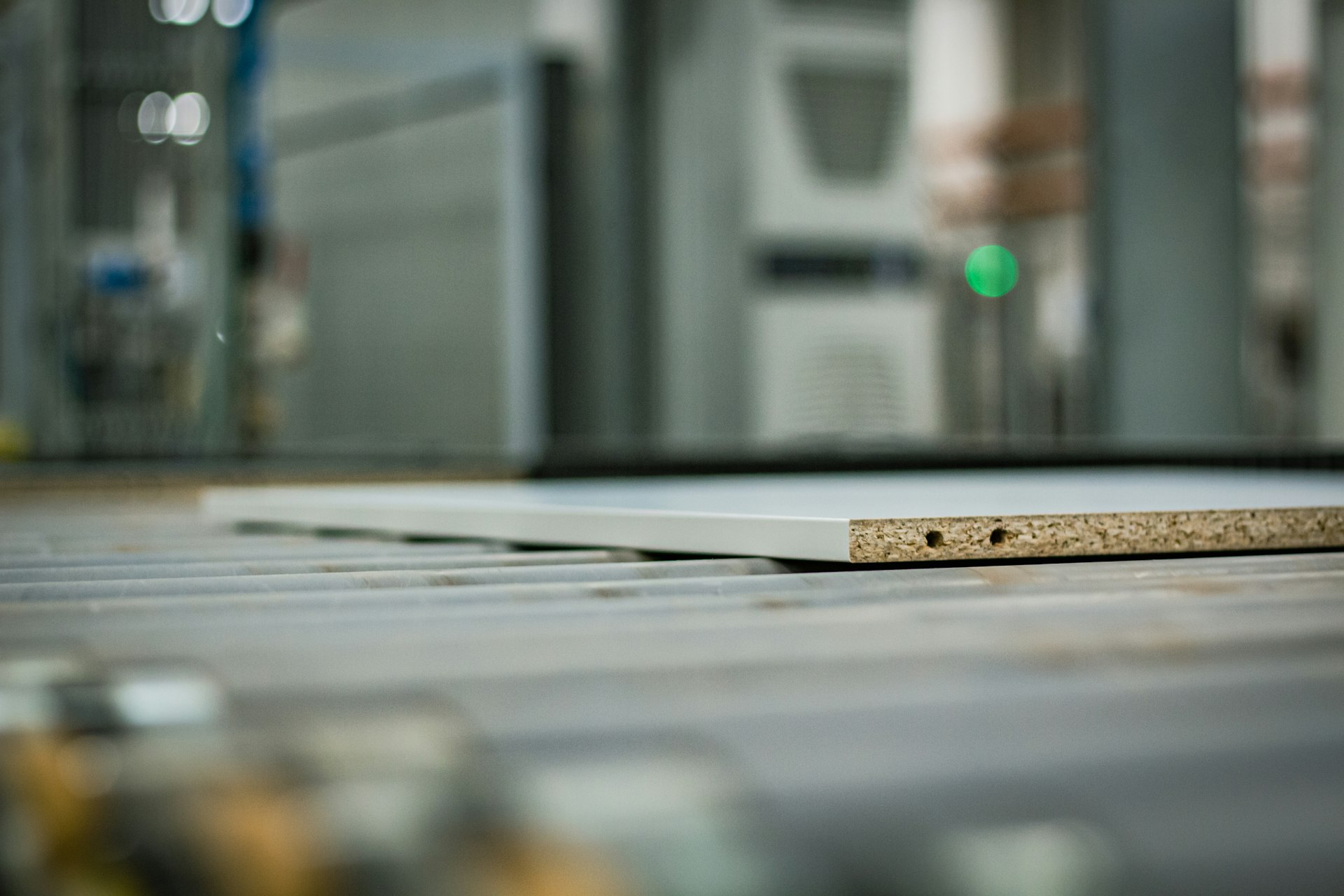
Het kiezen van het juiste materiaal voor uw meubels
Het selecteren van de optimale grondstof is van het grootste belang om het gewenste resultaat te bereiken voor uw meubel- of maatwerk timmerwerkproject. Multiplex, bekend om zijn uitzonderlijke sterkte en duurzaamheid, is vaak de voorkeurskeuze voor toepassingen die superieure prestaties vereisen. Het premium prijspunt kan echter noodzakelijk maken om alternatieve opties te onderzoeken. Medium-density fiberboard (MDF) en spaanplaat bieden haalbare alternatieven en bieden in veel gevallen kosteneffectieve oplossingen zonder in te leveren op kwaliteit. MDF blinkt uit in het creëren van gladde, vlakke oppervlakken die ideaal zijn om te schilderen of te lamineren, waardoor het een populaire keuze is voor kasten en planken. Spaanplaat is minder dicht, maar biedt een budgetvriendelijke optie voor minder veeleisende projecten, zoals ladekasten of interieurcomponenten. Zorgvuldige overweging van de specifieke vereisten van het project, inclusief het beoogde gebruik, het draagvermogen en esthetische voorkeuren, zal de selectie van het meest geschikte kernmateriaal bepalen. Uiteindelijk is de ideale keuze er een die op harmonieuze wijze prestatie-, budget- en ontwerpoverwegingen in evenwicht brengt.
Shaker-stijl panelen en speciale vormen
Voor speciale vormen zoals handgrepen in deurpanelen of een shaker-stijl paneel, is er slechts een beperkte keuze aan materialen om uit te kiezen. Meestal is MDF het beste materiaal om speciale vormen uit te werken, inclusief ronde vormen. Deze panelen kunnen alleen worden afgewerkt met een PVC-afwerking of een verfafwerking vanwege de vele hoeken en randen.
Toepassing van buitenmeubilair
Compact laminaat is een ideale keuze voor tuinmeubelen vanwege de uitzonderlijke duurzaamheid en bestendigheid tegen barre weersomstandigheden. Dit hogedruklaminaat is ondoordringbaar voor vocht, UV-stralen en temperatuurschommelingen, waardoor uw meubels jarenlang in uitstekende staat blijven. Bovendien is compact laminaat zeer kras-, vlek- en stootbestendig, waardoor het perfect is om de ontberingen van buitengebruik te weerstaan. De lage onderhoudsvereisten en het brede scala aan kleuren en afwerkingen stellen u in staat om stijlvolle en praktische tuinmeubelen te creëren die passen bij alle decoratieve stukken.
Conclusie
Het kiezen van de juiste engineered boards voor uw meubelprojecten vereist een zorgvuldige overweging van materialen en afwerkingen. Door de kenmerken van LDF, MDF en HDF te begrijpen, kunt u weloverwogen beslissingen nemen over welke board past bij de vereisten van uw project. Bovendien kan het selecteren van de juiste afwerking, of het nu fineer, laminaat of melamine is, een grote impact hebben op de esthetiek en duurzaamheid van uw meubels.
Bij Guangzhou Sourcing, combineren we expertise en vakmanschap om uitzonderlijke meubeloplossingen te leveren die zijn afgestemd op uw behoeften met behulp van verschillende houtproducten. Of u nu woonruimtes, kantoren, keukenkastjes of buitenruimtes ontwerpt, onze uitgebreide kennis van materialen en afwerkingen zorgt ervoor dat uw meubelprojecten schitteren met zowel stijl als inhoud. Neem vandaag nog contact met ons op om te ontdekken hoe we kunnen samenwerken aan uw komende projecten en uw meubelontwerpen naar nieuwe hoogten kunnen tillen.

